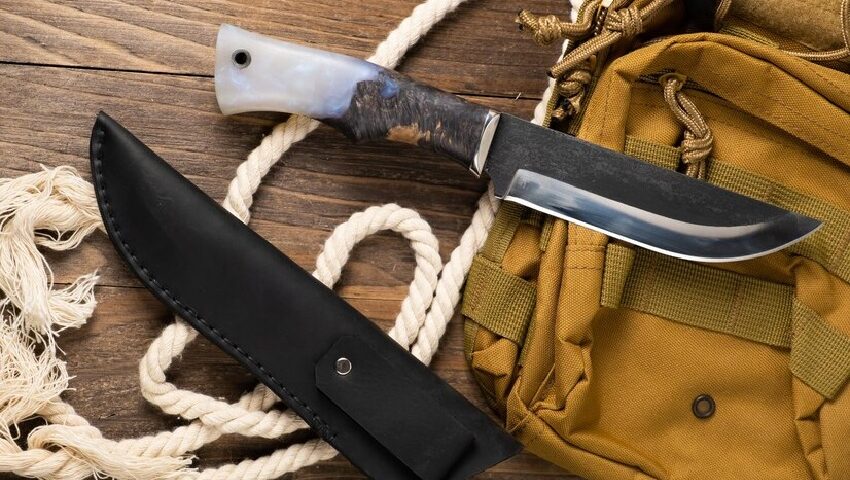Choosing the right knife for wilderness survival is crucial for anyone venturing into the outdoors. Whether you’re a seasoned explorer or a novice camper, the right knife can make a significant difference in your ability to handle tasks ranging from preparing food to building shelter and ensuring your safety. You must learn wilderness survival skills to understand the importance and uses of knives.
Here our aim to equip you with the knowledge to select the best knife for your wilderness adventures.
Understanding Knife Types
Before diving into specific features, it’s essential to understand the different types of knives suited for wilderness survival. Primarily, survival knives can be categorized into fixed blades and folding knives.
Fixed Blade Knives
These are generally more robust and reliable for heavy-duty tasks. They lack moving parts, making them less likely to break under pressure. Their sturdy construction makes them ideal for chopping, batoning wood, and other rigorous activities.
Folding Knives
These are while more compact and portable, may not withstand the same level of abuse as fixed blades. However, they’re convenient for lighter tasks and everyday carry. Some high-quality folding knives are designed with survival in mind, featuring strong locks and durable materials.
Blade Material and Construction
The material and construction of a knife’s blade play a pivotal role in its performance and longevity. High-carbon steel is renowned for its durability and ease of sharpening, making it a popular choice for survival knives. However, it’s prone to rust if not properly maintained. Stainless steel, on the other hand, offers excellent rust resistance but can be more challenging to sharpen. Havalon knives often utilize high-quality stainless steel for their replaceable blades, ensuring sharpness and rust resistance.
Full Tang Construction is another critical feature to consider. A full tang means the blade material extends through the knife’s handle, providing enhanced strength and leverage. This design is preferable for survival knives as it ensures the knife can withstand demanding tasks without the handle and blade separating.
Blade Shape and Edge
The shape of the blade influences its versatility and suitability for various tasks. A drop point blade is a versatile option, offering a strong, curved cutting edge with a robust tip for piercing. This design is well-suited for general survival tasks, including skinning game and slicing.
Alternatively, a clip point blade features a more pronounced tip, making it ideal for precision tasks like carving. However, the finer tip may be less durable than that of a drop point.
The edge of the blade also matters. A straight edge is best for clean cuts and is easier to sharpen in the field. A serrated edge can be useful for sawing through tougher materials like rope, but it requires special tools for sharpening.
Handle Material and Ergonomics of Knife
The handle should provide comfort and a secure grip, even in wet conditions or when wearing gloves. Materials like G10, Micarta, and rubber offer durability and good grip. The design of the handle, including any contours or texture, can significantly impact your ability to use the knife safely and effectively over extended periods.
Size and Weight
The best survival knife strikes a balance between size and functionality. A blade length of 4 to 6 inches is often ideal, offering enough size for demanding tasks without becoming unwieldy. The weight should also be considered, especially if you’ll be carrying the knife over long distances. A lighter knife reduces fatigue but shouldn’t sacrifice durability and functionality.
Additional Features
Some survival knives come with additional features that can be handy in the wilderness. A pommel at the end of the handle can serve as a hammer or striking tool. A lanyard hole allows for securing the knife to your wrist or gear. Integrated fire starters or whistles can also be beneficial in emergency situations.
Practical Considerations
When choosing a survival knife, consider your specific needs and the environments you’re likely to encounter. Think about the tasks you’ll need the knife for, from food preparation to fire making and shelter building. It’s also worth considering any legal restrictions on knife carry in your region to ensure compliance.
Care and Maintenance
A good survival knife will last a lifetime with proper care. Regular cleaning, sharpening, and oiling (for high-carbon steel blades) are essential to maintain its condition and functionality. Investing in a quality sheath is also crucial to protect the blade and ensure safety when not in use.
Conclusion
Selecting the best knife for wilderness survival involves a careful consideration of various factors, including the type of knife, blade material and construction, blade shape and edge, handle ergonomics, size, and additional features. By understanding these aspects and aligning them with your specific needs, you can ensure that you have a reliable tool that enhances your ability to thrive in the wild. Remember, the best survival knife is the one that suits your needs and feels right in your hand, providing confidence and reliability when you need it most.




